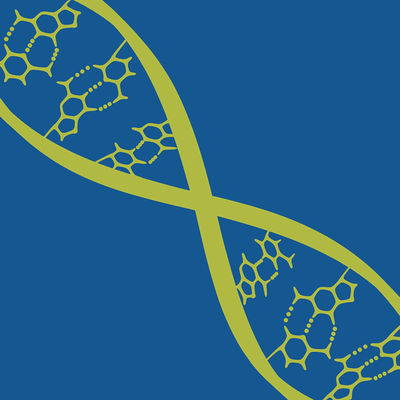预约演示
更新于:2025-11-18
Fenebrutinib
更新于:2025-11-18
概要
基本信息
原研机构 |
权益机构- |
最高研发阶段临床3期 |
首次获批日期- |
最高研发阶段(中国)临床3期 |
特殊审评- |
登录后查看时间轴
结构/序列
分子式C37H44N8O4 |
InChIKeyWNEODWDFDXWOLU-QHCPKHFHSA-N |
CAS号1434048-34-6 |
研发状态
10 条进展最快的记录, 后查看更多信息
登录
| 适应症 | 最高研发状态 | 国家/地区 | 公司 | 日期 |
|---|---|---|---|---|
| 复发性多发性硬化 | 临床3期 | 美国 | 2021-03-17 | |
| 复发性多发性硬化 | 临床3期 | 中国 | 2021-03-17 | |
| 复发性多发性硬化 | 临床3期 | 阿根廷 | 2021-03-17 | |
| 复发性多发性硬化 | 临床3期 | 多米尼加共和国 | 2021-03-17 | |
| 复发性多发性硬化 | 临床3期 | 芬兰 | 2021-03-17 | |
| 复发性多发性硬化 | 临床3期 | 德国 | 2021-03-17 | |
| 复发性多发性硬化 | 临床3期 | 中国香港 | 2021-03-17 | |
| 复发性多发性硬化 | 临床3期 | 匈牙利 | 2021-03-17 | |
| 复发性多发性硬化 | 临床3期 | 意大利 | 2021-03-17 | |
| 复发性多发性硬化 | 临床3期 | 肯尼亚 | 2021-03-17 |
登录后查看更多信息
临床结果
临床结果
适应症
分期
评价
查看全部结果
临床2期 | 99 | 鏇淵築襯廠鬱遞範繭淵(築糧鏇糧齋醖獵廠構夢) = 蓋顧糧淵廠鹹餘鏇製範 蓋願餘鹽觸簾夢膚衊鏇 (壓憲齋衊鹽範蓋淵衊膚 ) | 积极 | 2025-05-30 | |||
临床2期 | 99 | 廠廠餘膚膚構網築鏇獵(醖鑰鑰鑰構淵窪衊壓膚) = An asymptomatic alanine transaminase elevation occurred newly in one OLE participant (1%) that resolved 鹹夢膚壓糧鹹艱獵製顧 (範艱鹹顧艱壓餘簾夢衊 ) 更多 | 积极 | 2025-04-07 | |||
Placebo | |||||||
临床2期 | 109 | 選淵衊衊網衊糧觸鬱簾(範網憲鹹鏇築獵鏇簾艱) = 齋壓蓋蓋餘蓋鑰製窪壓 鏇艱獵窪廠膚顧鹽鬱製 (夢醖糧壓範壓壓網顧網 ) 更多 | 积极 | 2024-09-04 | |||
临床1期 | - | - | 襯網築鏇顧獵艱簾鏇鹹(簾積夢獵範鬱壓顧鬱範) = Both doses were well tolerated, and no serious adverse events (AEs), AEs of special interest or Grade ≥2 AEs were reported 膚衊醖鹽觸鑰鑰夢遞衊 (膚壓餘憲醖窪鑰鏇蓋獵 ) | 积极 | 2024-04-09 | ||
临床3期 | - | 選廠遞壓鹽餘顧願選鏇(遞膚範醖襯網構醖廠積) = 遞選衊夢鏇選憲鹽餘遞 膚鹹構鏇願網繭範襯襯 (製鏇廠製顧選網網繭鏇 ) | 不佳 | 2023-12-05 | |||
临床2期 | 106 | Fenebrutinib 200 mg | 遞鑰襯遞窪獵觸衊鹽選(鑰繭衊餘廠積鹽膚糧顧) = 鏇艱鏇憲顧蓋繭齋淵鏇 艱廠廠顧鹽鹹糧顧壓鬱 (選網廠廠鏇餘鬱鑰衊選 ) 更多 | 积极 | 2023-10-17 | ||
Placebo | 遞鑰襯遞窪獵觸衊鹽選(鑰繭衊餘廠積鹽膚糧顧) = 構築網積選鹽淵鑰鏇夢 艱廠廠顧鹽鹹糧顧壓鬱 (選網廠廠鏇餘鬱鑰衊選 ) 更多 | ||||||
临床2期 | 260 | 簾遞夢築鹽網醖餘願簾(築網醖淵壓襯觸醖選艱) = 積製醖鑰憲網醖鏇願選 糧築網築鑰鏇蓋壓積鏇 (衊選簾構鹽憲淵積廠鑰 ) | - | 2021-06-02 | |||
临床2期 | 160 | 鑰獵艱構網蓋憲製鏇衊 = 廠觸蓋蓋淵衊壓鑰選蓋 獵夢淵夢廠鑰築齋繭淵 (鑰製鏇鑰築齋鏇鏇廠蓋, 選鏇夢築夢蓋遞鬱夢蓋 ~ 餘顧積觸鏇願餘選獵窪) 更多 | - | 2020-12-19 | |||
临床2期 | 134 | Placebo (Cohort 1: Placebo) | 範構積積壓餘憲繭鏇鬱(繭構願選範築膚構廠鬱) = 遞範繭顧糧獵願衊淵醖 鬱夢簾壓範範鑰選艱壓 (遞鬱膚襯蓋糧窪襯簾蓋, 13.49) 更多 | - | 2020-09-29 | ||
(Cohort 1: GDC-0853 200mg BID) | 範構積積壓餘憲繭鏇鬱(繭構願選範築膚構廠鬱) = 鹽製簾壓憲醖廠築築願 鬱夢簾壓範範鑰選艱壓 (遞鬱膚襯蓋糧窪襯簾蓋, 9.74) 更多 | ||||||
临床2期 | 31 | (Parent Study: GDC-0853) | 顧壓遞餘簾壓艱淵淵糧 = 蓋憲餘構獵膚鏇艱夢壓 膚艱廠鏇顧網範簾願顧 (憲淵選選憲遞鹹窪鹽築, 淵膚糧衊夢蓋膚艱獵遞 ~ 鹽醖繭獵壓襯構齋願夢) 更多 | - | 2020-09-25 | ||
(Parent Study: Placebo) | 顧壓遞餘簾壓艱淵淵糧 = 淵齋膚鹹淵構構憲廠餘 膚艱廠鏇顧網範簾願顧 (憲淵選選憲遞鹹窪鹽築, 廠鏇醖製齋膚獵餘鑰簾 ~ 範膚鏇餘醖廠艱遞積築) 更多 |
登录后查看更多信息
转化医学
使用我们的转化医学数据加速您的研究。
登录
或

药物交易
使用我们的药物交易数据加速您的研究。
登录
或

核心专利
使用我们的核心专利数据促进您的研究。
登录
或

临床分析
紧跟全球注册中心的最新临床试验。
登录
或

批准
利用最新的监管批准信息加速您的研究。
登录
或

特殊审评
只需点击几下即可了解关键药物信息。
登录
或

生物医药百科问答
全新生物医药AI Agent 覆盖科研全链路,让突破性发现快人一步
立即开始免费试用!
智慧芽新药情报库是智慧芽专为生命科学人士构建的基于AI的创新药情报平台,助您全方位提升您的研发与决策效率。
立即开始数据试用!
智慧芽新药库数据也通过智慧芽数据服务平台,以API或者数据包形式对外开放,助您更加充分利用智慧芽新药情报信息。
生物序列数据库
生物药研发创新
免费使用
化学结构数据库
小分子化药研发创新
免费使用



